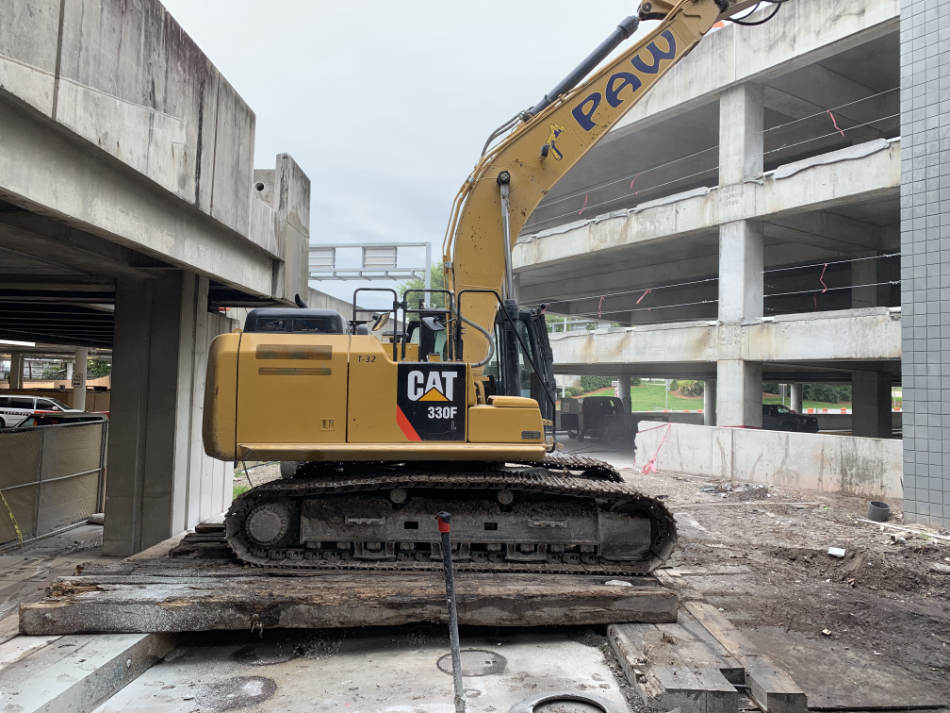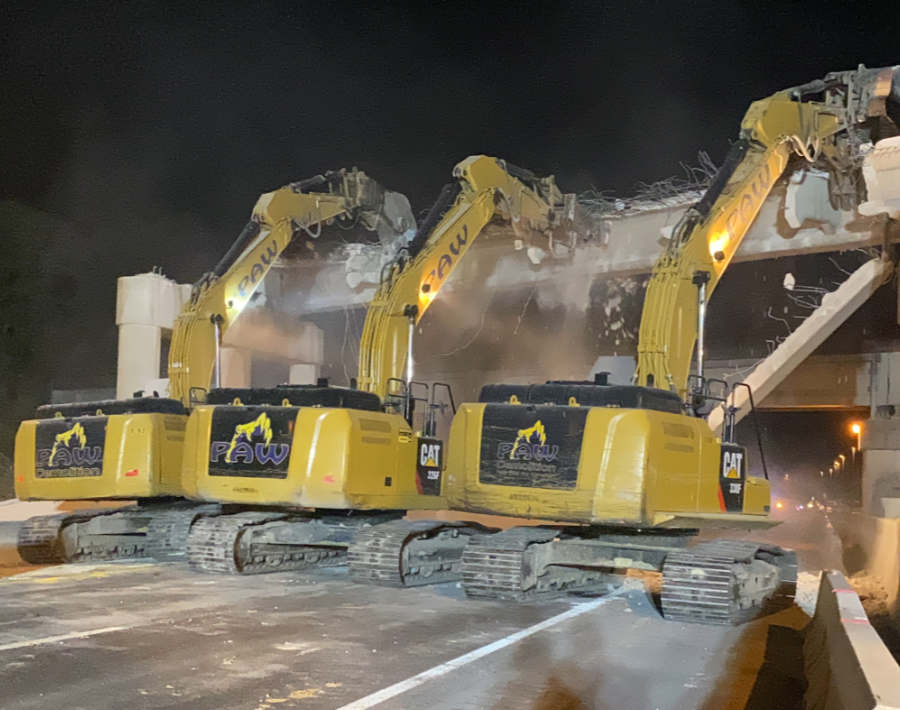Concrete bridge removal and bridge demolition are highly specialized fields requiring extensive technical knowledge, careful planning, and strict safety adherence. For municipalities, developers, and contractors in Tampa Bay, Pasco County, and St. Petersburg, partnering with experienced highway bridge demolition contractors is vital.
These professionals bring the expertise necessary to navigate complex structural, regulatory, and environmental factors inherent in such projects.
This article delves into essential best practices for concrete bridge removal and bridge demolition while detailing common challenges industry professionals face. We also provide actionable insights, including input from local experts, to guide successful project execution.
Why Proper Concrete Bridge Removal and Bridge Demolition Matter
Successful bridge demolition goes far beyond merely dismantling old infrastructure. It requires precision to maintain safety for workers and the public, preserve surrounding environments, and ensure project efficiency. Errors in concrete bridge removal can result in costly damages, extended timelines, and increased safety risks.
On the other hand, expertly managed bridge demolition projects in Tampa Bay exemplify careful coordination, regulatory compliance, and environmental stewardship.
Working with skilled highway bridge demolition contractors experienced in local conditions significantly reduces risk and enhances project effectiveness.
Best Practices for Concrete Bridge Removal and Bridge Demolition
1. Comprehensive Planning and Structural Assessment
Every successful concrete bridge removal project starts with in-depth planning. Early structural assessments evaluate the bridge’s condition, complexity, and potential hazards. Detailed site surveys, including soil analysis and surrounding infrastructure mapping, inform tailored demolition strategies.
In addition, planners must consider factors such as traffic flows, utility locations, environmental sensitivities, and community impact. Local contractors with proven expertise provide critical consultation during this phase, anticipating challenges before they arise.
2. Strict Safety Protocols and Compliance
Safety is non-negotiable in all bridge demolition operations. Contractors must adhere to OSHA standards, state guidelines, and municipal regulations. Key safety measures include:
- Setting and enforcing exclusion zones.
- Mandatory use of personal protective equipment (PPE) for all personnel.
- Comprehensive hazard recognition training programs.
- Maintaining clear, constant communication among teams during active demolition.
Especially in areas like Pasco County and St. Petersburg, additional permits and inspections require local knowledge. Experienced highway bridge demolition contractors understand these requirements thoroughly and ensure full compliance, thereby mitigating risks.
3. Deploying the Right Equipment for Efficient Bridge Demolition
Utilizing modern, specialized equipment is crucial for efficient and safe concrete bridge removal. Hydraulic excavators fitted with concrete pulverizers, diamond wire saws for precision cuts, and controlled explosives for segment separation (where regulations allow) are commonly employed. Equipment selection depends on bridge size, location, project timeline, and acceptable noise or vibration impact.
Contractors operating in the Tampa Bay region invest in adaptable machinery fleets capable of handling both urban and rural bridge demolition projects efficiently.
4. Expanded Environmental Precautions in Bridge Demolition
Environmental responsibility is a cornerstone of contemporary bridge demolition practices. Handling concrete debris, dust, and potential contaminants requires stringent prevention methods. Key environmental mitigation strategies include:
- Dust suppression techniques such as water sprays, misting systems, and containment barriers.
- Systematic sorting and recycling of demolished materials to minimize landfill waste.
- Preventing runoff and contamination in adjacent water bodies, wetlands, or sensitive habitats through sediment controls and erosion barriers.
- Continuous air and water quality monitoring during active demolition phases.
- Engaging with local environmental agencies early to ensure full regulatory compliance and swift resolution of concerns.
For example, demolition projects near Florida’s ecologically sensitive areas, such as Pasco County, benefit greatly from contractors proficient in both environmental compliance and reclamation practices. Such diligence preserves local ecosystems while maintaining project progress.
Key Challenges in Concrete Bridge Removal and Bridge Demolition Projects
Understanding challenges upfront equips stakeholders to implement proactive solutions. Below, we detail some of the most pressing issues faced in the industry.
Permit Acquisition and Navigating Regulatory Complexities
Securing the required permits is often the first significant hurdle. This process can involve coordination with multiple agencies, including state transportation departments, water management districts, and environmental commissions. Each agency may have distinct requirements and timelines.
Delays in permit approval can cascade into costly postponements. Employing seasoned highway bridge demolition contractors familiar with local permitting landscapes helps expedite approvals through accurate documentation and effective agency communication.
Advanced Traffic Management to Reduce Disruptions
Bridge demolition frequently occurs in high-traffic areas, posing challenges to maintaining safe and efficient traffic flow. To address this, contractors must develop detailed traffic management plans involving:
- Coordinated lane closures with phased schedules to minimize congestion.
- Designated detours supported by clear signage and real-time GPS updates to drivers.
- Use of traffic control technologies such as automated barriers, electronic message boards, and traffic cameras.
- Regular coordination meetings with local law enforcement and transportation agencies to adjust plans in response to changing conditions.
- Communication campaigns informing the public and business stakeholders well in advance of demolition activity.
These measures reduce delays, improve safety for pedestrians and motorists, and limit economic impacts on surrounding communities.
Mitigating Environmental Impact Concerns
Environmental concerns remain critical due to potential contamination risks and habitat disruption during bridge demolition. Project managers conduct thorough environmental impact assessments to identify sensitive areas and establish mitigation measures. These may include:
- Careful handling and disposal of hazardous materials like lead paint or asbestos.
- Installation of silt fences and sediment traps to protect nearby waterways.
- Scheduling demolition to avoid critical wildlife breeding or migration periods.
Adherence to Florida’s stringent environmental regulations ensures protection of natural resources and reduces liabilities.
Effective Cost Management in Bridge Demolition
Budget overruns are a common concern in bridge demolition projects due to high labor, equipment, permit fees, and disposal costs. Strategies to control costs include:
- Developing detailed, itemized budgets during the planning phase with contingencies for unexpected issues.
- Using phased project schedules to optimize workforce deployment and equipment usage.
- Regular financial monitoring and reporting to promptly identify deviations.
- Collaborating transparently with contractors and stakeholders to manage expectations and resource allocation.
Engaging experienced contractors proficient in cost forecasting and risk mitigation improves budget reliability and reduces financial surprises.
Real-World Insights from Tampa Bay’s Bridge Demolition Experts
Bringing the discussed best practices and challenges into perspective, local experts in Tampa Bay demonstrate how theory translates into success on the ground.
Recently, a complex waterway bridge removal near Wesley Chapel was managed with precision concrete cutting and staged debris removal. This approach minimized environmental disturbance and maintained traffic flow. The project highlighted the value of detailed upfront planning and rigorous safety compliance to meet tight schedules without incident.
For further details on such projects, visit the Wesley Chapel bridge-heavy highway demolition page.
Another example involves a heavily-trafficked highway bridge demolition in Brandon. The contractor expertly managed simultaneous traffic control and structural demolition by leveraging advanced equipment and a skilled workforce. Coordinated community outreach and law enforcement collaboration ensured smooth execution.
Their industrial demolition experience complemented the bridge work, reflecting the benefits of versatile contractors. More information can be found on the Brandon industrial demolition page.
Case studies from other regions, including Zephyrhills and Lakeland, similarly reinforce the importance of environmental precautions, effective traffic management, and cost control strategies. These insights demonstrate the practical application of industry best practices in diverse Florida communities. For instance, the Zephyrhills bridge-heavy highway demolition page provides examples of local projects balancing environmental stewardship with construction demands.

Safe, efficient teardown services backed by 30+ years of local experience.
Actionable Tips for Business Owners and City Planners
- Partner with experienced local contractors: Choose Tampa-based demolition professionals knowledgeable about regional regulations and environmental considerations.
- Invest in early and thorough project planning: Engage regulatory agencies and community stakeholders early to mitigate risks and streamline permitting.
- Prioritize safety and environmental stewardship: Implement comprehensive protocols to protect workers and the community.
- Request transparent project proposals: Ensure bids include detailed timelines, equipment plans, cost estimates, and contingency measures.
- Develop proactive traffic management plans: Collaborate with local authorities for smooth traffic flow and minimal disruptions.
- Regularly monitor costs and risks: Use ongoing communication and reporting to keep budgets controlled and projects on track.
For professional consultation or a detailed project proposal on concrete bridge removal or bridge demolition in Tampa Bay and surrounding areas, consider contacting PAW Demolition. Early engagement can improve project outcomes significantly.
Frequently Asked Questions About Bridge Demolition
How long does a typical concrete bridge removal project take?
The timeline varies depending on bridge size, location, environmental concerns, and permitting requirements. Smaller bridges may take a few weeks, while large highway bridges often require several months for planning, permitting, demolition, and cleanup.
What are the primary costs involved in bridge demolition?
Costs usually include labor, equipment rental, disposal fees, permitting, traffic management, and environmental mitigation. Early detailed estimates and contingency budgeting help manage expenses effectively.
How is environmental impact minimized during demolition?
Through dust and debris control, recycling materials, preventing water contamination, and adhering to environmental permits. Contractors work closely with local agencies to ensure all regulations are met and ecosystems protected.
What safety measures are in place during bridge demolition?
Strict OSHA compliance, use of PPE, exclusion zones, hazard training, and constant on-site communication are fundamental. Specific regional safety requirements may also apply.
Can traffic disruptions be avoided entirely?
While some disruption is often unavoidable, comprehensive traffic management plans, including detours and scheduled lane closures during off-peak hours, significantly reduce impact on motorists and pedestrians.
Conclusion
Concrete bridge removal and bridge demolition projects demand specialized expertise, comprehensive planning, and meticulous execution. Adhering to best practices — from structural assessment and safety protocols to environmental precautions and effective traffic management — ensures projects meet safety, budgetary, and timeline goals.
Understanding and preparing for common challenges related to permits, environmental impact, traffic, and costs further enhance success.
In Tampa Bay, Pasco County, St. Petersburg, and neighboring regions, collaborating with knowledgeable highway bridge demolition contractors provides a vital competitive advantage. Their area-specific insight and technical proficiency support the complexity of bridge demolition and related heavy industrial projects.
To explore how expert demolition services can benefit your next project, request a consultation or detailed quote today.
Contact PAW Demolition to learn more about our full scope of bridge demolition and demolition contractor services across Florida.


